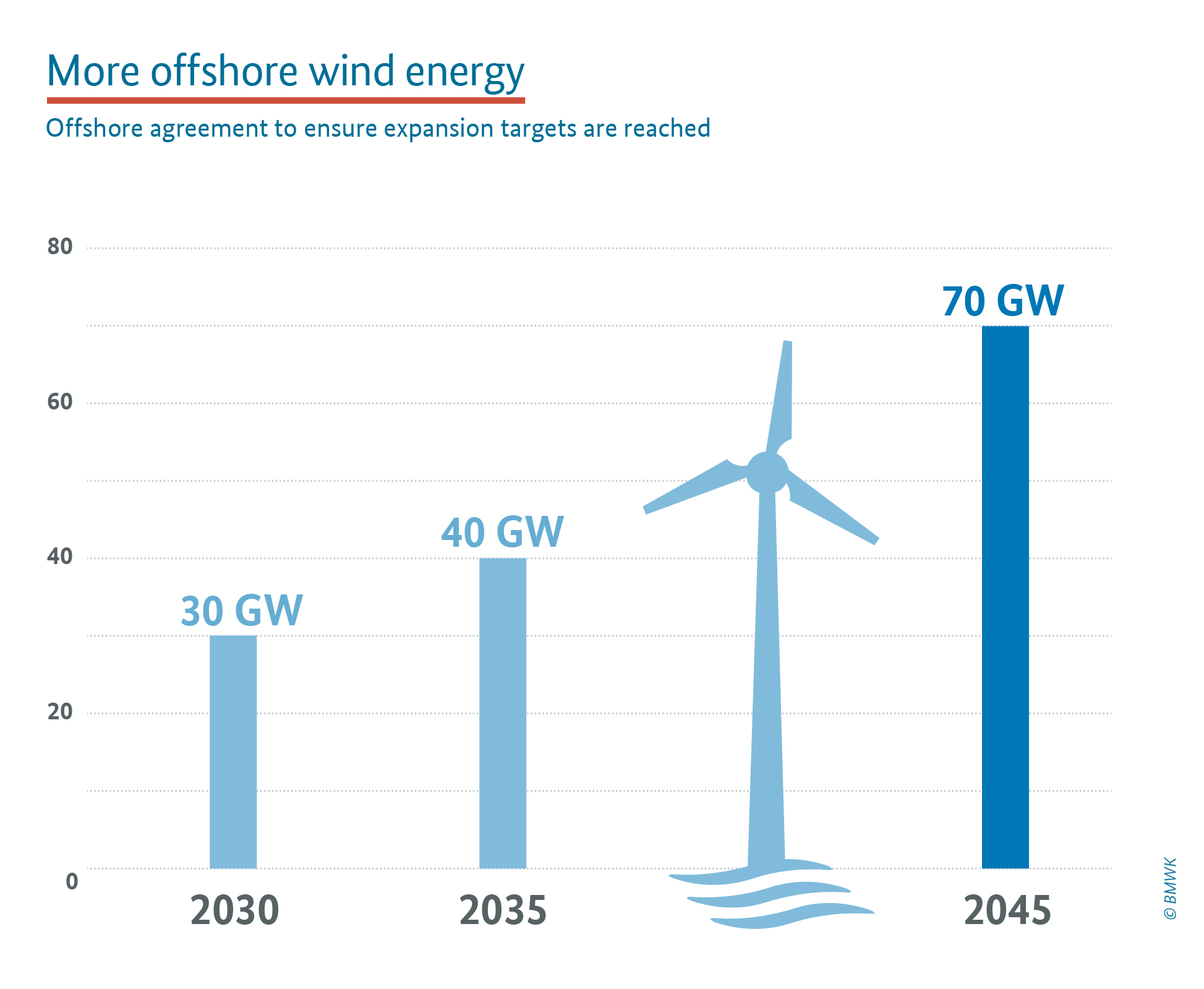New offshore agreement for more wind energy at sea
By 2030, some 30 gigawatts of offshore wind energy are to be installed off the German coast. To make sure the offshore grid connections are ready in time, the Federal Government, the Länder and the transmission system operators have now agreed on important steps.
 © Federal Ministry for Economic Affairs and Climate Action
© Federal Ministry for Economic Affairs and Climate Action
The revised Wind Energy at Sea Act entered into force in summer 2022, introducing new and ambitious targets: at least 30 gigawatts of offshore capacity is to be installed by 2030, and 70 gigawatts, i.e. more than twice that amount, by 2045. These targets could significantly advance the expansion of renewables beyond the mainland.
In order to feed this wind energy into the electricity grid, the relevant offshore grid connections and offshore wind farms need to be ready on time. To set the course, a new 2022 Offshore Realisation Agreement was concluded on 3 November 2022 between the Federal Government, the city states of Bremen and Hamburg, the federal states of Mecklenburg-Western Pomerania, Lower Saxony, North Rhine-Westphalia and Schleswig-Holstein, as well as the transmission system operators 50Hertz, Amprion and TenneT. This is an updated version of an initial agreement from 2020 which has been amended to take account of the new expansion targets.
Federal Minister Robert Habeck said: „The offshore agreement is an important milestone towards increasing offshore wind energy capacity and represents a strong joint commitment to achieving the 30 gigawatt expansion target by 2030. In it, we have agreed on a clear process to align things step by step so that we can reach the 30 gigawatts. What’s key here are the agreed milestones and timetables for constructing the connection lines we need to reach the 30 gigawatt target.”
The new offshore agreement also contains steps for designating areas at sea, for ensuring offshore expansion is environmentally friendly, for crossing the territorial sea and for accelerating the individual processes involved. In particular, it sets specific, binding timetables and milestones for the construction of the grid connections needed.

